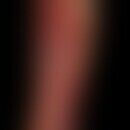DefinitionThis section has been translated automatically.
General informationThis section has been translated automatically.
LiteratureThis section has been translated automatically.
- Kreusch J Koch F (1996) Reflected light microscopic characterization of vascular patterns in skin tumors. dermatologist 47: 264-272
- Ruocco E et al (2004) Noninvasive imaging of skin tumors. Dermatol Surg. 30(2 Pt 2): 301-310
- Wolf IH et al (1997) Epiluminescence microscopy for the diagnosis of pigmented skin tumors. Dermatologist 48: 353-362
- Zalaudek I et al (2004) Clinically equivocal melanocytic skin lesions with features of regression: a dermoscopic-pathological study. Br J Dermatol 150: 64-71
TablesThis section has been translated automatically.
Vessel pattern in reflected light microscopy
Description |
Features |
Tree containers |
Heavily branched, tortuous vessels that are superimposed on the tumour. Acute-angled (50-90%) branching of the thick main vessels to the finest capillaries. Occasional crossing of branches. Calibre diameter 0.18 mm of the larger to 0.055 mm of the secondary vessels. The larger ones correspond macroscopically to telangiectasia. |
Coronary vessels |
The superimposed vessels surround the tumor and are less curved and branched. Average diameter 0.14-0.03 mm. Exclusive occurrence in sebaceous hyperplasia, where they encompass the sebaceous glands and the excretory duct. |
Comma vessels |
Short, strongly curved vessels of about 0.06 mm calibre, which are supported by the tumour. Short course parallel to the skin surface, then disappearing again in depth. Occasional and irregular occurrence, rarely branching. Vessels typical for dermal nevi. |
Hairpin-like vascular loops, starting from the dermal plexus, apparently supply numerous tumors. Depending on the length of the loop, different vascular patterns develop: | |
Dot Vessels |
Thin tumours have only short capillary loops, which impress as red spots. These dots are not surrounded by a pigment network. This results in a reddish shade in tumours with a low pigment content. Thickness about 0.03 mm. Occurs in malignant melanomas and numerous epithelial tumours. |
Hairpin vessels |
Long vascular loops of thicker tumors. Varying degrees of tortuosity and tangling, calibre 0.03 mm. Easily recognizable by tumor edges, on which they usually lie at an angle. In the tumour centre of nodular tumours, they appear as point vessels due to their vertical growth. Frequently occurs in thicker malignant melanomas, seborrhoeic keratoses and other keratinising tumours. Hairpin-like vessels can also be found in scars, starting from the edges of the incision and running parallel to the skin surface. |
Skin tumours and their characteristic reflected-light microscopic features
Disease |
Reflected light microscopic features |
Basalioma |
Tree-like vascular structure already in early forms, vessels sharply defined due to superficial position. |
Dermal melanocytic nevi |
Large-caliber commixtures. |
Epidermocorneal melanocytic nevi |
Mirror form with central, small areas with dot or hairpin vessels. |
Malignant melanoma |
Eccentric, flat trimming with evenly arranged point and hairpin vessels. With increasing thickness, the hairpin vessels increase in size compared to the point vessels. From 2 mm tumour thickness on also superimposed, branched vessels. Regression zones show no characteristic structures. Amelanotic melanomas show no keratinization, possible pigment residues and eccentrically accentuated point and hair vessel arrangement. |
Pointed nevus |
Shooting target type construction with a low-pigment centre, in which there are numerous, evenly arranged point vessels and a more pigmented rim. |
Keratinising tumours |
White courtyard around hair or spot vessel with following yellowish keratin zone. |
Hyperplasia of the sebaceous glands |
Coronary vessels surrounding the excretory duct. |



